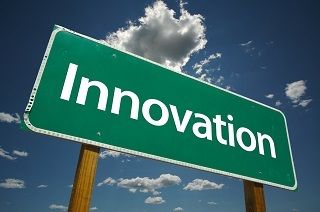From Guest Blogger Minty: Why It's Hard To Roll Out Innovative Green Projects (And What To Do About It)

The demand is there. But consumers are presented with products that do not have the ROI and speed of return they want.
The supply is there. But engineers struggle to bring their innovative solutions to market.
Why is there a gap and how can green energy businesses fill it?
The gap lies in the need for more education, among other things, between stakeholders in the green energy industry.
Bruce Rowse, of MarketingGE, who has been actively involved in the green energy sector since 2002, says that:
‘Its glib to offer simple solutions, when the reality is that it is actually very hard to roll out innovative green projects for a range of reasons. These can include at the level of the particular technology or innovation high risk and low ROI, and at the wider level policy uncertainty and change. One of the key lessons from the last decade is how quickly policies can change, in some cases leaving innovators relying on policy incentives stranded.
However history has also shown that green innovators themselves create some of these challenges. Two key mistakes I see green innovators making are
- Exaggerating the benefit of their solution, and possibly not even understanding the engineering and science based fundamentals behind the solution and
- Then actually believing, in an extremely convincing fashion, that the exaggerated benefits represent the truth, and being able to influence policy makers to support poor solutions that in the long run are ultimately ineffective and create opposition to future innovation.
Charismatic green idealism coupled with a lack of engineering knowledge and political influence can be a very dangerous combination! You see this can result in innovations that don’t actually provide anywhere near the benefit they are expected to being promoted and even incentivised on the basis of a flawed economic case.
In one case, where the savings of standby power controllers were greatly exaggerated, but were able to attract green incentive funding, I saw literally hundreds of millions of dollar of phantom savings being claimed. Ultimately this contributed to the opposition political party deciding to scrap the incentive funding, which they began to do when they won the next election, damaging green companies providing genuine benefit.’”
Education based on sound engineering, can reduce risk and thus increase the chances of your green project being rolled out.
Financiers won’t touch high risk projects, and rightly so. Green innovators shouldn’t be making unrealistic promises. It’s far more effective to focus on reducing risk through educating different project stakeholders, which will then attract financing, rather than to focus on “spin” and unsubstantiated promises of great ROI.
The rolling out of innovative technology requires synergy between senior management, policy makers and finance institutions.
The reason why they all reluctant to support green energy is the fear created by the perceived risk of failure.
And the solution (that might seem simple but is essential) is education.
Education starts internally for a company and spreads out to external publics including banks, governments and prospects. The underlying problem with green projects is that stakeholders do not understand each other and many times reality is twisted.
So what can you do?
One first must identify where is the lack of information that is hindering the development of the project. Is it the lack of investment? Is it the low predicted adoption rate? Or is the budgeting issues within the company?
The gap is in understanding the information that each of the stakeholders need to support a certain project or product.
Put simply….
Educate.
They should start by educating the rest of their team and senior management, i.e. the decision makers in a company. Then they should focus on educating financial institutions on the ROI and other factors that play a role in financing projects. Finally they should focus on educating the community and prospects for this product or service to create demand that supports their idea.
There are many ways that those can be achieved but I want to suggest a few proactive ways to start “educating”:
In-company: presentations, emails, memos, flyers, info board messages, reports (with the company bottom line and success factors in mind)
Financial institutions: case studies, initial demand reports, realistic projections, presentations, guarantees, partnerships (realistic numbers are much more desirable than over-promising ROI)
Prospective users: blogs, publications, transparency reports, social media, infographics (show them that your solutions solves their problem better than what they use now)
Rolling out an innovative green project or solution is a challenge but results can be beneficial for both technology developers and consumers.
The trick is to find a way to create relationships and continuously educate all publics on either side of the equation. Well executed marketing strategies can do both and create more opportunities for green energy businesses and better life for people at the same time.
When the focus of marketing shifts from making the quick sale to educating publics, change can happen and green energy projects’ implementation can be accelerated.
Antonia Zorluer is the Content & Marketing Manager at MarketingGE – the green energy marketing company that empowers businesses to market better and sell more. Antonia welcomes all green energy business owners and professionals to MarketingGE’s next free online seminar on generating cheaper leads on Thursday, 23 July 2015 at 9 am EST. Everyone who wants to attend or watch the replay can register here.
